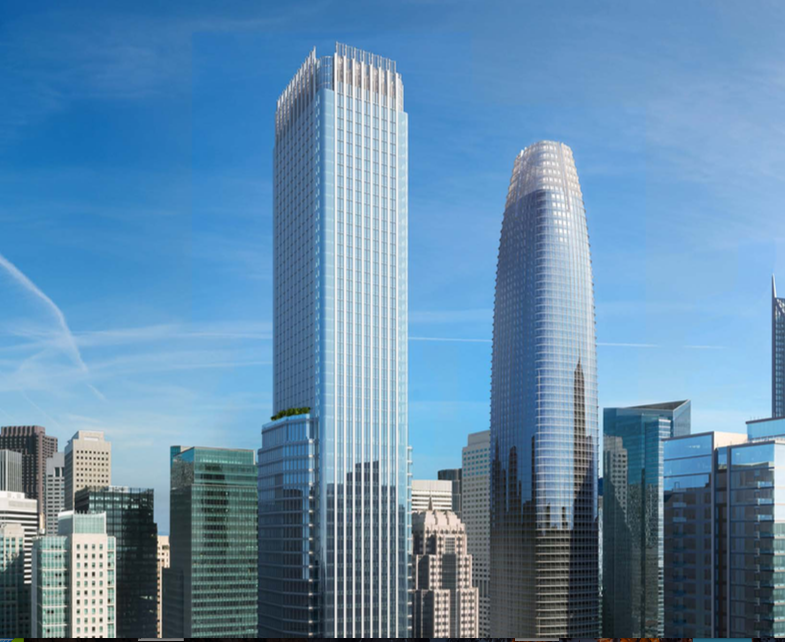In March, the Office of the State Auditor released a report on the implementation of the Regional Housing Needs Assessment, the massive planning process that seeks to add 2.5 million housing units to the state over the next eight years.
Most of the major news media in the state ignored the audit, which was pretty scathing: It said, in essence that the Department of Housing and Community Development, which oversees RHNA, bungled the numbers, used projections that aren’t reliable, and left cities and counties hanging without accurate goals and timetables.

People who are typically on opposite sides of the housing debate cheered: Yimby law said that audit should that HCD’s projections were too low. The California Association of Local Electeds said the audit proved projections were too high.
Missing from much of the debate and discussion is a problem that a few critics have raised from the start: The RHNA goals are so far-fetched that cities and counties can’t possible meet them—and that’s not entirely, or even primarily, the fault of local government.
Yes, some communities are trying, in almost comical ways, to block and new housing and increased density. But in the areas where the state wants to see the most housing growth—places like San Francisco and Los Angeles—the numbers are beyond impossible, unless the state decides to radically change its policies and provide vast new sums of money to subsidize affordable housing.
San Francisco has already upzoned the entire city, eliminating single-family zoning altogether. That’s a dream of the Yimbys. But we’re not seeing much new housing construction, and the new construction is by no means affordable to most people who need housing.
City planners have already approved more than 50,000 new units, and, as far as the city is concerned, the developers can break ground tomorrow. It’s not happening.
That’s because, in many places, zoning and red-tape aren’t the barriers to new construction. The problem is that developers aren’t getting financing for their projects, because the market doesn’t support them right now.
Help us save local journalism!
Every tax-deductible donation helps us grow to cover the issues that mean the most to our community. Become a 48 Hills Hero and support the only daily progressive news source in the Bay Area.
It’s capitalism, not Nimbyism, that’s slowing construction right now.
Here’s how Michael Barnes, an economist and member of the Albany City Council, puts it in a letter he’s circulating:
The inflated RHNA targets allow HCD to scapegoat local governments for the inability of developers and the profit-driven housing market to provide the quantity of housing California residents need at the prices they can afford.
Let’s look at some numbers, again from Barnes:
The report states (p. 21), “California must plan for more than 2.5 million homes over the next eight years, and no less than one million of those homes must meet the needs of lower-income households.” 2.5 million new housing units in eight years is slightly more than 300,000 housing units annually. The graph (p. 15) shows that in only one year, 1986, was that much housing produced in California. Yet somehow the state is expected to meet that one-year historically high level of production for eight years in a row. This is impossible. The residential building industry was decimated in the 2008 Great Recession, and California now only produces slightly more than 100,000 housing units annually. It is not feasible to triple production quickly.
2) The report also states that “no less than one million of those homes must meet the needs of lower-income households.” The graph (p. 22) indicates that the figure of one million refers to the needs of low- and very low-income households. The generally accepted figure for the cost of deed-restricted affordable housing units for these income levels is $750,000 per unit. At that price, the cost of one million affordable units is $750 billion dollars. While it is possible that inclusionary housing could reduce this figure by shifting some of the burden to other renters, these costs are impossible to fund.
In some places, with creative financing, the subsidy needed to make a unit “affordable” is lower; lets postulate for the sake of argument that it’s only half what Barnes is citing.
That’s still $325 billion. The state isn’t even providing five percent of that.
In San Francisco alone, the price tag for the RHNA affordable housing mandates is $19 billion.
That means the affordable housing just won’t get built. Not at the level that state requires. There’s no other way to talk about this.
I have not heard a single Yimby activist or supporter of the RHNA plan provide any scrap of information or any proposal whatsoever for how all that housing is going to get funded.
The hard-core neo-liberal argument goes like this: Well, once you build 2.5 million housing units, prices will start to come down. Then we won’t need as much subsidy. In fact, the RHNA goals call for a five percent vacancy rate statewide, a level HCD calls “healthy.”
Let’s, for a moment, join the reality-based community: If developers who have permits in their hands right now are not building in one of the hottest housing markets in the country, because the projected rents and sales prices don’t “pencil out” (which means they don’t offer a high enough return for the investors), what makes HCD think they will start building more when prices fall?
The data over many years shows that they haven’t. Construction is cyclical, and part of the cycle is housing prices; when they fall, so does new construction.
Matthew Mandich, a student of mine in the Masters in Urban and Public Affairs Program at the University of San Francisco, just finished an exceptionally detailed, well-researched thesis on the role of the RHNA goals in the city’s housing crisis. He interviewed people on all sides of the debate and did a deep dive into the numbers.
His conclusion: It’s never going to work. From his paper:
While this new RHNA process will force up-zoning and land use deregulation in San Francisco there is no guarantee that the required housing, especially on the affordable side, will ever get built. To build the 46,500+ units of affordable housing allocated over the next eight years, 5,800 units of affordable housing will need to be built per year. For reference, there have only been 5,000 units of total housing built in San Francisco in one of the last twenty years (2016), and over the last ten years the average number of affordable units built per year was 874. In addition, San Francisco is currently projected to need $19 billion to build the required affordable housing over the next RHNA cycle. While this new RHNA process may help address the overall supply shortage in the long run, without significant additional state funding and new revenue streams San Francisco will fall well short of its affordable housing goals, meaning the RHNA process will do little to solve the ongoing affordability crisis.
Although the new RHNA process will help with the overall housing shortage if development follows up-zoning in a timely manner, it will do little to solve the overall affordability crisis, as this is an issue of funding rather than land use policy. Overall, the effect that new market-rate housing will have on affordability at the lower ends of the income spectrum will be minimal and/or too slow to have a significant impact, especially as low income households are being priced out of San Francisco at a rapid rate. To achieve true affordability, units must be built in 100% affordable buildings and/or removed from the open market.
More:
The outcomes of rezoning (i.e. up-zoning) are also uncertain since there is no guarantee that housing will actually be built on up-zoned sites in a timely matter. In fact, it is possible that up-zoning could generate more transfers of property than actual construction. In a study on Chicago that examined the outcomes of spot up-zoning on a series of individual parcels that were tracked over a five year period, MIT researcher Yonah Freemark (2019) found that the up-zoned properties saw significant increases in transaction price, as well as an increase in existing condominium price. However, he did not see evidence for any new construction in the period of study. As such, Freemark (2019) concluded that “the short-term, local-level impacts of up-zoning are higher property prices but no additional new housing construction.”
And the sites that cities are supposed to upzone under RHNA don’t lead to new housing except in very limited circumstances.
For example, a recent study out of UCLA using a sample of sites from 97 California cities during the 5th RHNA cycle had, on average, around a 10% chance of being developed within the planning period (Kapur et al 2021). In San Francisco, the probability that a RHNA inventory site would be developed over the 8-year cycle was between 7.3% and 9.7%. The share of actual units built on inventory sites in San Francisco was between 29-33% of all units built, meaning that 67-71% of the units constructed during this cycle were on non-inventory sites, on par with the rest of the Bay Area. If 70% of new housing is being built on non-inventory sites, forcing cities to identify and up-zone sites that only have a one in ten chance of development may not lead to more housing actually being built there.
None of the members of the SF delegation in Sacramento has said a word about the RHNA goals being at best a farce. Nobody has suggested that the goals be linked to state money for affordable housing.
Instead, everyone is acting as if the city needs to do everything it can to make life easier for private developers, who depend on investors who care nothing about the city, its housing needs, or anything but the bottom line.
I’m waiting for someone in the Mayor’s Office, the Department of City Planning, or the Office of Governor Gavin Newsom to tell me how this makes any sense.




